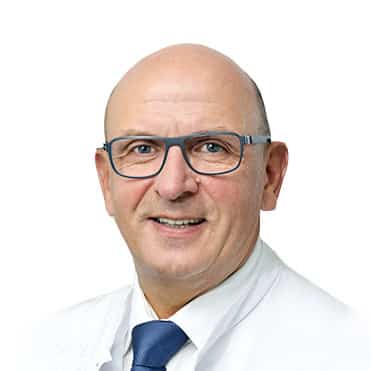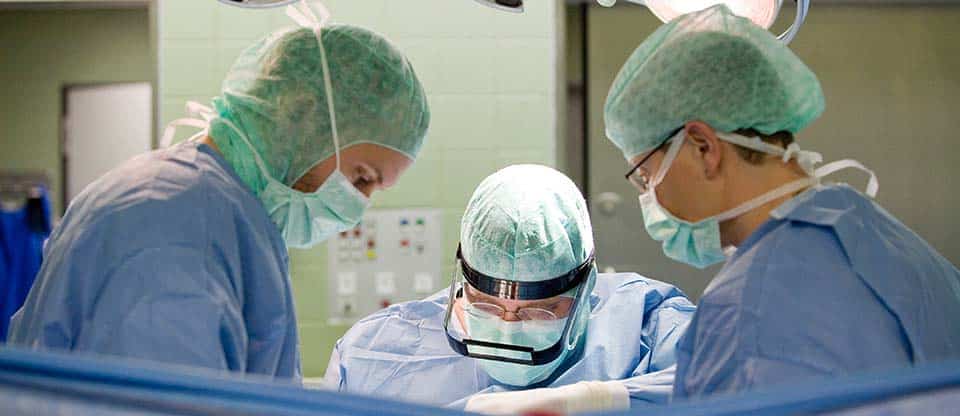The immediate causes of uterine cancer (uterine cancer, endometrial cancer) are not yet known exactly. However, a number of factors are known to contribute to its occurrence.
There are two types of uterine cancer:
- So-called type I carcinoma, which arises and grows under the influence of hormones,
- as well as the so-called type II carcinoma, the emergence and growth of which is independent of hormones.
Risk factors for type I carcinoma, in addition to age, include being overweight, especially after menopause, and taking estrogen-containing sex hormones as part of hormone therapy during and after menopause. In contrast, contraceptive use during childbearing years, especially when using drugs containing estrogen and progestogen, protects against the development of endometrial cancer.
Other risk factors include infertility, early onset of the first menstrual period (menarche), late menopause, or long menstrual cycles without ovulation (for example, in so-called polycystic ovaries). In addition, high blood pressure, diabetes mellitus, previous radiation therapy, and hereditary factors play a role.
Rarely, taking antiestrogens (such as tamoxifen) to treat hormone receptor-positive breast cancer, as well as certain precancerous changes in the lining of the uterus (atypical endometrial hyperplasia), may increase the risk of developing cancer. Along with taking contraceptives, multiple pregnancies and physical activity also have a protective effect.
The causes of the more rare type II carcinomas have not yet been elucidated.
The following factors contribute to an increased risk of developing cancer:
- Age
With age, the risk of developing uterine cancer increases. You are at increased risk if you are over 50 years of age. While in the age group from 35 to 39 years, only 5.6 out of 100,000 women a year fall ill, then at the age of 50-54 years 31.9, and in 65-69 years even 80.1 women require cancer treatment uterus in Germany, and the cost of postponing a visit to the doctor can cost lives.
- The action of estrogen - overweight
The endogenous female sex hormone estrogen plays a significant role in the occurrence of uterine cancer. It is produced mainly in the ovaries and in adipose tissue and promotes the growth of glandular cells in the lining of the uterus. During the menstrual cycle, the action of estrogen is interrupted by the influence of the second female sex hormone, progesterone (the corpus luteum hormone), which is produced by the corpus luteum after ovulation. Ultimately, this leads to cyclic rejection of the mucous membrane (menstruation) and thereby prevents malignant degeneration of the mucous membrane. Scientists see the main cause of carcinogenesis in the process of hormonal changes during menopause. While the body in this phase of life stops producing progestins, further production of estrogen continues, especially in adipose tissue. A significant part of estrogens is formed, depending on the degree of obesity, in adipose tissue. The long-term effect of estrogens on the endometrium can contribute to the development of a malignant tumor through prolonged cell stimulation. This also occurs when taking estrogens as hormone replacement therapy during menopause and postmenopause. With a combination of estrogens and gestagens, as is now accepted and recommended by international standards, there is no increased risk of developing endometrial cancer.
Women with an early onset of the first menstruation and a late onset of menopause have a slightly increased risk. There is also a slightly increased risk in nulliparous women. The duration of the effect of estrogen on the endometrium is important here.
- Heredity
A genetic predisposition to developing uterine cancer can be inherited from parents. This is Lynch syndrome (formerly known as HNPCC syndrome; the so-called hereditary nonpolyposis colon cancer) that can be inherited with a probability of up to 50% in the next generation. In these families, one or more first-degree relatives, that is, mother or sister, are also sick. In addition, cases of bowel and ovarian cancer are common in these families. About 2-3 percent of all patients with uterine cancer have a family history. An increased risk is seen in women who have previously been diagnosed with colon cancer or breast cancer.
In many of the affected families, corresponding genetic changes (mutations) can be identified. In order to exclude a predisposition to the disease in a healthy relative, it is first necessary to diagnose a genetic change in a sick family member.
- Antiestrogens
Women treated with tamoxifen for breast cancer have an increased risk of developing uterine cancer, especially when they have taken this medication for more than 5 years. Tamoxifen is an antiestrogen, which means that it suppresses the action of the body's own estrogens in the mammary glands. However, tamoxifen acts more like estrogen on the uterine mucosa. It stimulates the lining of the uterus to grow and can thus promote tumor development. If you are taking tamoxifen to treat breast cancer, you should have regular check-ups with your gynecologist. When assessing the survival advantage of patients with breast cancer, the probability is quite high.
- Radiation therapy
It also increases the risk of uterine cancer in patients who have undergone radiation therapy in the pelvis or abdomen.
- Atypical hyperplasia
An increased risk of uterine cancer is found in women who suffer from the so-called endometrial hyperplasia. This is a pathological change in the lining of the uterus, which is associated with an increased risk of uterine cancer. With so-called simple hyperplasia, there is a negligible risk of cancer and is < 1%. In the so-called complex hyperplasia, the risk of carcinoma is between 5-10 %, and in hyperplasia with atypia, this risk increases significantly - up to 30 %. With endometrial hyperplasia without atypia, there is no need for further therapy, primarily in the removal of the uterus. In the presence of atypia, as a rule, the treatment of uterine cancer in Germany is carried out by removing the uterus, the price of such therapy is the inability to give birth to children. Women who wish to have another child should consult their gynecologist, as in certain cases drug therapy is also possible.
Head of the Center for Operative Gynecology
Head of the Regional Center for Pelvic Floor Surgery
Video
Request appointment
Useful links
















